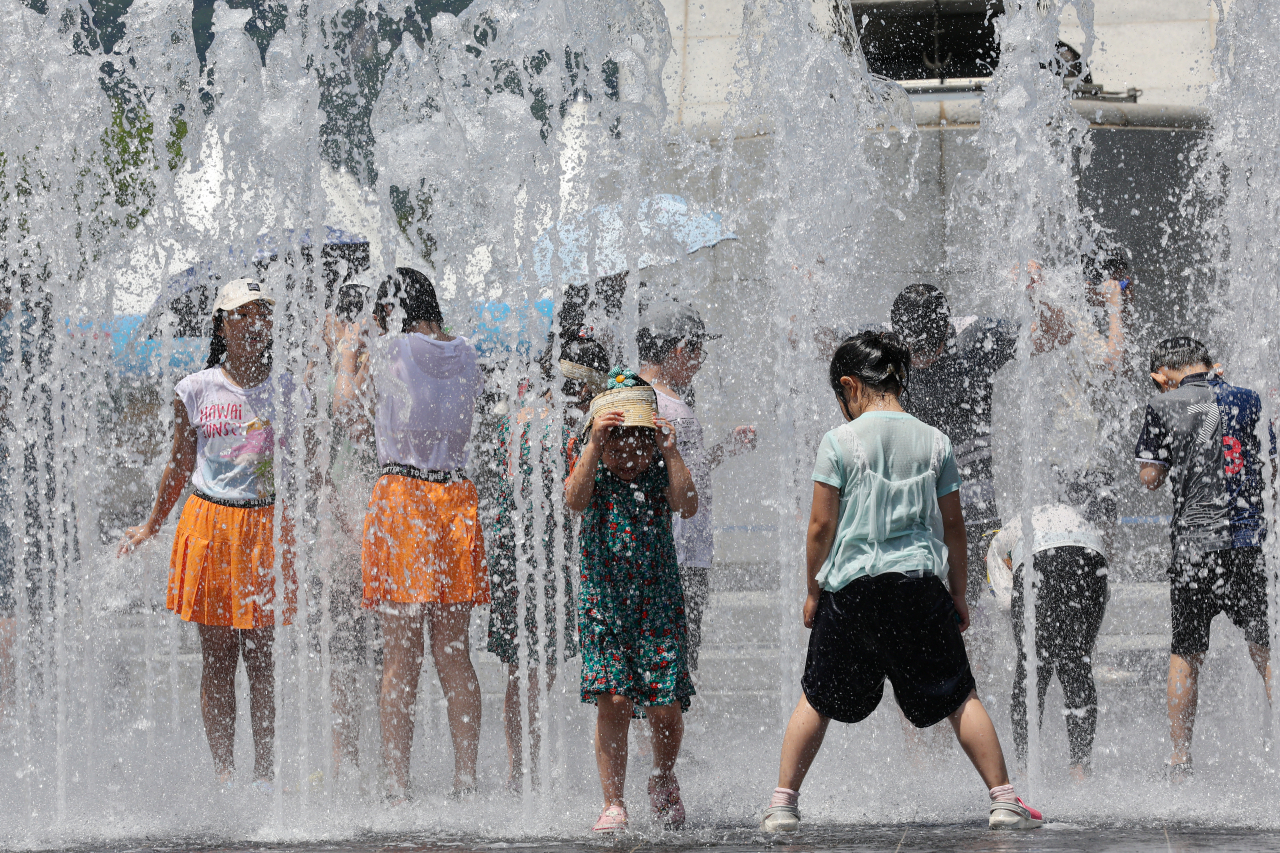 |
Children enjoy playing in the water at the fountain of Gwanghwamun Square, as heat wave warnings were issued throughout Seoul on June 18. (Yonhap) |
The first heat wave warning of the year was issued for central and inland regions in South Korea, and the government heightened the heat wave alert level nationwide to beef up monitoring and countermeasures.
The season's first heat wave warning took effect for seven regions, including the cities of Icheon and Yeoju in Gyeonggi Province, Chuncheon in Gangwon Province, and the central countries of Buyeo and Uiseong, according to the Korea Meteorological Administration (KMA).
A heat wave warning is issued when the highest perceived temperature is expected to be 35 C or higher.
The weather agency also issued a heat advisory for most other regions nationwide, including Seoul. Combined, some 71 percent, or 128 out of the 180 regions across the country, are under the alert status.
A heat wave advisory is issued when the highest perceived temperature is expected to be 33 C or higher for two or more consecutive days or when significant damage is expected due to a sudden increase in the perceived temperature or prolonged heat wave conditions.
As a scorching heat wave is forecast to continue through Monday, the government raised the heat wave crisis level by one notch to the third-highest level of "alert" under its four-tier system nationwide at 11:30 a.m., calling for stronger measures to protect the people, infrastructure and industries.
The warning system has four levels: attention, caution, alert and serious.
The interior ministry ordered relevant ministries and local governments to thoroughly carry out measures to protect the elderly, the homeless, construction workers and other vulnerable people, as well as to prevent damage to the agriculture and fishing industries and to ensure the safety of railroads and other infrastructure.
In 2022, the season's first third-highest crisis level was issued one day earlier on July 2.
(Yonhap)







